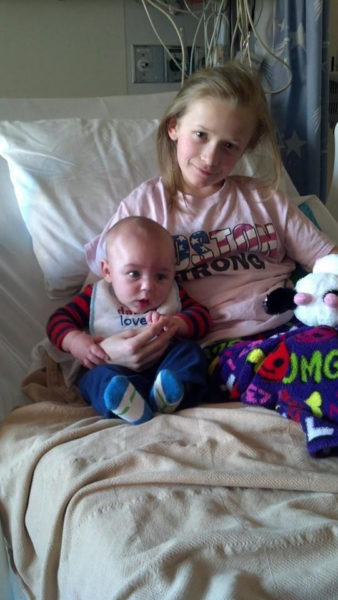
Allison Chadwick
(Allison Chadwick, of Bristol, has Type 1 diabetes. This is her story, in her own words, about a day in her life.)
My name is Allison and I am 15 years old. I was diagnosed with Type 1 diabetes when I was 11. Most people think diabetes is caused from eating too much sugar and not exercising enough. Type 1 diabetes is not caused by any of that. I was and still am a very active person. I play sports, I run regularly, and I have never eaten an abundance of sugar.
My day starts and ends with diabetes. The minute I wake up, I prick my finger to check my blood sugar. The very last thing I do before bed is prick my finger to check my number.
An average day for me consists of …
Wake up. Check my number. Treat if high or low. Get ready for school. Calculate how many carbs are in my breakfast. Check my number and cover for said carbs. Leave for school. Remember that I left my insulin in the fridge. Run home to get it. Barely make the bus.
Get to school. Go to my first class. My pod (insulin pump) lets out an ear-piercing screech. Go to the nurse to change it. Get back to class and try to make up the lost 15 minutes of instructional time. A half an hour later, head to my next class. This one seems to go over pretty well. Next is lunch. Calculate carbs. Prick my finger and cover for said carbs.
After lunch, I go to my next class, which may happen to be physical education. Prick my finger to make sure I’m not in the lower range, as the exercise may cause me to go too low. Adjust my pump settings accordingly. Twenty-five minutes later I feel like crap. My blood sugar is 36. I’m sweaty, feel like I’m going to throw up, and I’m confused. I manage to drink a juice and have to sit out the remainder of class. Twenty minutes later my number is better and allows me to move onto my next two classes without a hitch.
After school I have soccer practice, so I again check my number, give a correction because I’m high. An hour later I drink a juice and have some crackers because my number is now low. After practice I go home and shower, where I realize my pod is peeling off, so I have to bandage myself up like a mummy to ensure I get the full time and insulin out of it.
Time for dinner. I prick my finger. My number is high, so I now have to wait 15 minutes before I can eat so my insulin has a jump-start on my correction before the carbs kick in. After dinner I do homework. Maybe a carb-free snack, because I shouldn’t go to bed with too much insulin on board.
Later, as I get into bed, I prick my finger and tell my mom and dad what my number is and how much active insulin I still have in me. I go to sleep. A couple hours later, one of my parents will come check my number to make sure it’s OK. Around 1 a.m., my mom cracks open my door to make sure I’m breathing. Around 4 a.m., my dad will come check my number. And I start this all over at 6 a.m.

Allison Chadwick, the day after her diagnosis with Type 1 diabetes at the age of 11.
This is just a small fraction of what my day is like with diabetes and doesn’t include the typical teenager life. It is never the same and it is never predictable. Diabetes is not only about surviving the day; it is about having a long, healthy life. I not only have to worry about the short-term effects of a low or high blood sugar, I have to worry about the long-term effects. This is why I’m participating in JDRF One Walk to raise money to transform the lives of the millions of people living with Type 1 diabetes.
When you have Type 1 diabetes, your body stops producing insulin – a hormone essential to turning food into energy. Even with the most vigilant disease management, a significant portion of your day will be spent with high or low blood-sugar levels, which can lead to unpleasant short-term side effects and even long-term complications like kidney failure, heart attack, and blindness.
With Type 1 diabetes, there are no days off and there is no cure. But there is hope.
You’re part of that hope. By donating, you can support life-changing research that helps people with Type 1 diabetes live healthier and longer, until a cure is found.
Your support makes it all possible.
Please consider donating to my team, Alli’s Allies, to help create a world without diabetes.
(The walk is on Sept. 16 in Saco. Several local individuals and businesses have made generous donations to the campaign. To donate to Alli’s Allies, contact Jen Touchette at 315-0094.)



